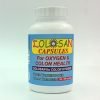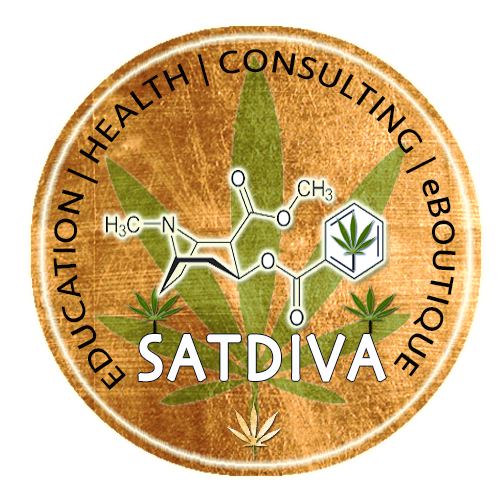Courtesy of http://www.medicalcannabis.com educational forums.
Terminology
Cannabis – the Latin term from Greek and older origin for a group of medicinal herbs of the family Cannabaceae used in traditional medicine. The group includes Cannabis {Indica, Sativa, Americana, Africans and Ruderalis} with a Sativa/Indica cross being in most commonly used.
 Marihuana – marijuana; a slang term adopted for the Cannabis herb {See: William Randolph Hearst, Spanish American war, Poncha Villa, La Coocaracha}.
Marihuana – marijuana; a slang term adopted for the Cannabis herb {See: William Randolph Hearst, Spanish American war, Poncha Villa, La Coocaracha}.
Cannabinoid – one of the 60 {according to PDR} to 420 {asst. medical literature} medical constituents of the Cannabis herb.
Hemp – old world term for Cannabis usually associated with the non drug fibers used in rope and sail making and about 50,000 other industrial products.
THC – short for delta-9-tetrahydrocannabinol, considered to be the most psychoactive Cannabinoid and the active ingredient in Cannabis.
CBD – short for Cannabidiol one of the least psychoactive and most anti-inflammatory Cannabinoids.
As you read this timeline, note that the treatment of disease with Cannabis [marijuana] has until very recently been done with tinctures and extracts. That is, most smoking of cannabis, for medicine in particular, is a function of prohibition. It takes much, much less of the plant material to gain a medicinal effect by smoking than by eating and cannabis is quite simply too expensive to make a tincture or extract when it’s price is increased by several thousand percent because of the war on drugs.
This point cannot be overemphasized because as you will read below, without the risk of smoking, cannabis poses a risk which is comparable with the safest medicines currently in use. {MK 1999}
Medical Cannabis History Timeline
Five thousand years ago, a Chinese emperor named Shen Nung prescribed cannabis for beriberi, malaria, rheumatism, constipation, absent-mindedness, and menstrual cramps.
In ancient India, cannabis was valued as a way to lower fevers and relieve dysentery. The drug was seen by some as a gift from the Gods. Reference: Marijuana: Current Facts, Figures and Information, Brent Q. Hafen and David Souler
In his influential book Materia Medica, published in 70 A.D., Roman physician Pedacius Dioscorides recommended cannabis to treat earache and diminished sexual desire.
1854
More recently, The 1854 United States Dispensary said this about cannabis;
Extract of hemp acts as a decided aphrodisiac, increases the appetite, and occasionally induces the cataleptic state. In morbid states it has been found to produce sleep, to allay spasm, to compose nervous inquietude, and to relieve pain. In these respects it resembles opium in its operation; but it differs from that narcotic in not diminishing the appetite, checking the secretions, or constipating the bowels. It is much less certain in its effects; but may sometimes be preferably employed, when opium is contraindicated by its nauseating or constipating effects. The complaints to which it has been specially recommended are neuralgia, gout, tetanus, hydrophobia, epidemic cholera, convulsions, chorea, hysteria, mental depression, insanity, and uterine hemorrhage. Dr. Alexander Christison, of Edinburgh, has found it to have the property of hastening and increasing the contractions of the uterus in delivery. It acts very quickly, and without anesthetic effect. It appears, however, to exert this influence only in a certain proportion of cases.
1938
”’Marijuana was made illegal in this century {1937/8} by congress over the objection of the American medical Association.
Dr. W. C Woodward of the American medical Association {AMA} was the only witness to oppose the bill. The legislative activities committee of the AMA wrote to protest the impending legislation {Grinspoon 1971}:
There is positively no evidence to indicate the abuse of cannabis as a medical agent or to show that its medicinal use is leading to the development of cannabis addiction. Cannabis at the present time is slightly used for medicinal purposes, but it would seem worthwhile to maintain its status as a medicinal agent… There is a possibility that a restudy of the drug by modern means may show other advantages to be derived from its medicinal use. [p. 226]
1941
Against all medical advice, the Marijuana Tax Act was approved by congress in 1937 and cannabis preparations were removed from the United States pharmacopoeia in 1941 {Bonnie and Whitebread 1974}. As Walton {1938, 162} noted, “Sasman in 1937 listed 28 pharmaceuticals which contained Cannabis indica. Most of the manufacturers are now removing cannabis from such combinations since the 1937 federal restrictions make it inconvenient to use such formulae”
1944
Only a few years later, the LaGuardia Committee took a clear-headed look at the marijuana “problem” in New York and found most of the claims that it caused crime, violence, insanity and death were completely unsubstantiated.
In regard to medical use, the LaGuardia report said;
“Marijuana has two qualities which suggest it may have useful actions in man.
The first is the typical euphoria-producing action which might be applicable in the treatment of various types of mental depression; the second is the rather unique property which results in stimulation of appetite” [1944, 147]
It is interesting that the committee did not shrink from commending euphoria itself as having therapeutic potential, and it noted more than 50 years ago the greatest contemporary {1990’s} use of cannabis as an appetite stimulant for patients with cancer, Aids or Hepatitis C.
1970
“The Controlled Substances Act of 1970 placed illicit drugs in one of five schedules, and the final decision about which schedule a drug was put in was made not by medical experts but by the Justice Department-the attorney general (John Mitchell) and the
Bureau of Narcotics and Dangerous Drugs, later named the Drug Enforcement Agency (DEA).
Cannabis and it’s derivatives were placed in schedule I, for drugs with a high potential for abuse and no medical use (Baum 1996).
Ironicaly, two new medical uses were discovered shortly after the law was passed. the first was the ability of Cannabis to reduce interoccular pressure (Hepler and Frank 1971; Hepler, Frank and Petrus 1976; Roffman 1982; Colasanti 1986;
Adler and Geller 1986), which suggested its use as a treatment for glaucoma.
Robert Randall, a schoolteacher suffering from glaucoma who was arrested for using cannabis to keep from going blind, fought
his case through the courts and finally in 1976 forced the federal government to provide him with cannabis for this purpose–the first legal marijuana smoker in the United States since 1937.
The second discovery can be considered new because of a new context, the horrors of more than 40 kinds of chemotherapy used by contemporary doctors as treatment for cancer (Roffman 1982). The most frequent toxic side effect of chemotherapy is violent, uncontrollable nausea and vomiting that lasts for hours, and conventional antiemetics often do not help. Patients who smoked cannabis before chemotherapy, however, reported to their doctors that the illegal drug helped them enormously, stopping the vomiting and even making them hungry (Grinspoon and Bakalar 1995).
This led to many clinical reports on the antiemetic effect of cannabis and the cannabinoids, starting with Sallen, Zinberg, and Frei (1975). Most of the research in this field has been summarized by Regelson et al. (1976), Roffman (1982), Levitt (1986), and Randall (1990). The successful use of cannabis in cancer chemotherapy led to the marketing of an expensive synthetic tetrahydrocannabinol under the name Marinol and rescheduling of this synthetic drug into Schedule II, though the plant and THC extracted from the natural source, remain in Schedule I.
The proven antiemetic value of cannabis also led to its use by many AIDS patients in the mid 1980’s, both as an appetite stimulant against the AIDS wasting syndrome and as a remedy against the intense nausea often caused by the HIV’s gradual takeover of the immune system and by the toxicity of AZT therapy. There are AIDS and cancer patients all over the country using cannabis for these purposes, regardless of the laws. Ironically, so many people with AIDS applied for admission to the federal “Compassionate Access” program for marijuana that in 1992 the United States Department of Health and Human Services shut the program down.”
{Reference: Cannabis in Medical Practice, M.L.Mathre 1997}






